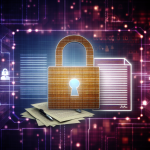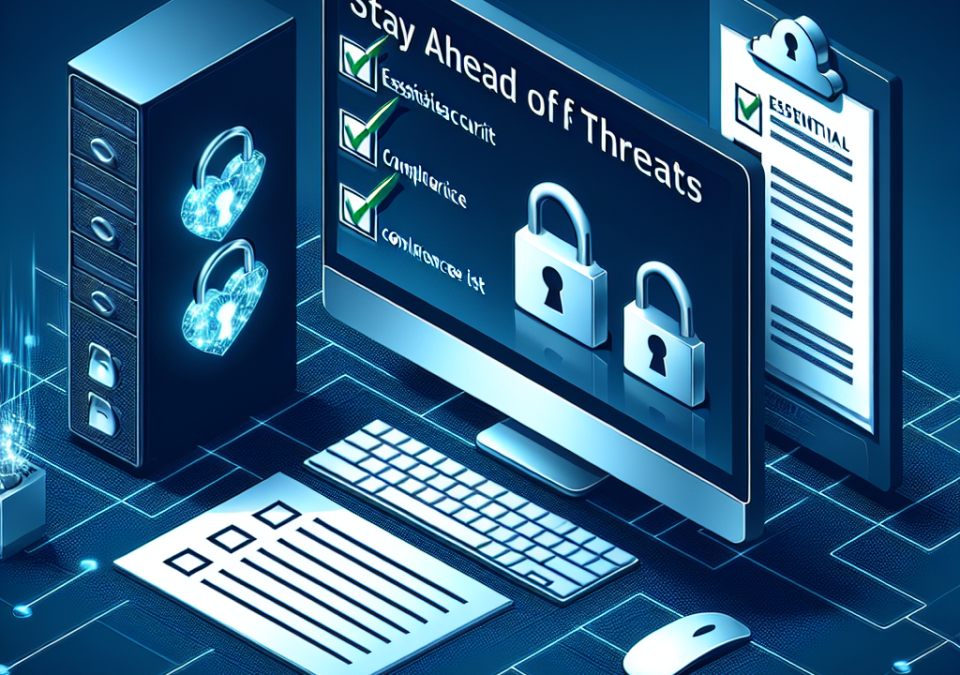
Maintaining Compliance in a Remote Work Environment: Challenges and Solutions
July 14, 2025
Securing Sensitive Data: Essential Compliance Requirements for Organizations
July 15, 2025
In today’s hyper-connected world, the importance of robust cybersecurity cannot be overstated. As cyber threats continue to evolve and become more sophisticated, organizations must prioritize compliance with relevant regulations and standards to safeguard their sensitive data. For 2023, businesses should consider a comprehensive cybersecurity compliance checklist to mitigate risks and enhance their security posture.
Understanding Cybersecurity Compliance
Cybersecurity compliance involves adhering to legal, regulatory, and industry standards designed to protect sensitive data. Compliance frameworks, such as GDPR, HIPAA, PCI DSS, and others, help ensure that organizations employ the necessary security measures to protect personal and proprietary information. Failing to meet these standards can lead to severe financial penalties, reputation damage, and loss of customer trust.
Essential Cybersecurity Compliance Checklist for 2023
1. Conduct a Risk Assessment
- Identify Assets: Catalog all sensitive data and resources.
- Evaluate Risks: Assess potential threats, vulnerabilities, and impacts.
- Determine Risk Appetite: Understand what level of risk your organization is willing to accept.
2. Understand Relevant Regulations
- GDPR: If your business handles the personal data of EU citizens, ensure compliance with data protection standards.
- HIPAA: For healthcare organizations, ensure safeguards are in place for patient data.
- PCI DSS: If you process credit card transactions, comply with the Payment Card Industry Data Security Standard.
It’s crucial to stay informed about new and updated regulations that may affect your operations.
3. Develop a Comprehensive Cybersecurity Policy
- Incident Response Plan: Create a plan detailing steps to take in case of a cyber incident.
- Data Handling Procedures: Establish guidelines for data collection, storage, and transmission.
- User Access Control: Implement role-based access controls to limit data exposure.
4. Implement Security Controls
- Firewalls and Antivirus Software: Ensure that firewalls are in place and regularly updated antivirus solutions are deployed.
- Data Encryption: Use encryption for sensitive data both at rest and in transit.
- Multi-Factor Authentication (MFA): Require MFA for all users to add an extra layer of security.
5. Conduct Regular Training and Awareness Programs
- Employee Training: Regularly train employees on best practices, identifying phishing attempts, and proper data handling.
- Security Culture: Foster a culture of security awareness where employees are encouraged to report suspicious activities.
6. Regular Audits and Monitoring
- System Audits: Conduct periodic audits of your cybersecurity policies and controls to identify gaps.
- Monitoring Tools: Use intrusion detection systems and continuous monitoring tools to keep an eye on potential threats.
7. Third-Party Risk Management
- Vendor Assessment: Evaluate third-party vendors for compliance with your cybersecurity standards.
- Contractual Obligations: Ensure your contracts with vendors include clauses related to cybersecurity and data protection.
8. Data Backup and Recovery Plans
- Regular Backups: Implement regular data backups to prevent data loss from ransomware or other incidents.
- Testing Recovery Plans: Regularly test your disaster recovery plan to ensure that it works effectively.
9. Cloud Security Measures
- Cloud Compliance: Ensure that any cloud service providers comply with relevant regulations and offer robust security measures.
- Configuration Management: Continuously review and manage configurations of cloud environments to prevent vulnerabilities.
10. Stay Informed and Adapt
- Follow Industry Trends: Keep abreast of emerging threats and evolving cybersecurity best practices.
- Regulatory Updates: Regularly review regulatory updates to ensure continued compliance.
Conclusion
In 2023, organizations must remain vigilant as cyber threats become increasingly complex. By adhering to a comprehensive cybersecurity compliance checklist, businesses can protect their sensitive data, maintain compliance with regulations, and ultimately build trust with customers and stakeholders. A proactive approach is not just about avoiding penalties; it’s about fostering a secure environment where innovation can thrive. Make cybersecurity a priority today, and secure your organization’s future.







